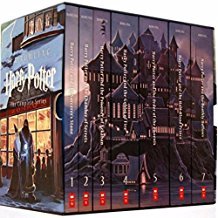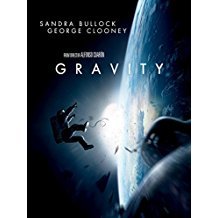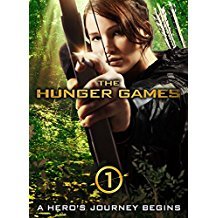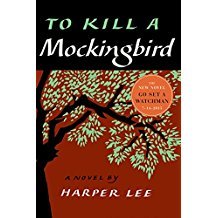What Time is It??
How Writers Can Connect the Setting to the Reader

What's the big deal about where your story takes place? Is it really all that important to know what era or time the story takes place?
Who cares, right?
Setting and The Protagonist
When brainstorming a story, I always taught my students to begin with the setting of their story. The setting is the where and when the story takes place: Time, place, era.
Before settling on a setting, make sure you can answer the journalistic questions about it:
Who
What
Where
When
Why
How
Why should you do this first? Because your readers are going to ask why the story takes place in that era, place, and time. If you don't answer their questions, they will move on to another story.
That's bad.
You need to be able to make the connection to the protagonist because it matters.

Harry Potter and the Sorcerer's Stone
For instance, look at the setting of Harry Potter. He lives in the cupboard underneath the stairs in an abusive home. Sort of like a prison! Where does he end up? At Hogwarts! A magical castle environment with nooks and crannies, secret chambers, and a vibrant history that engulfs him and the reader. See how the author connected the setting to the protagonist? Hogwarts, at times, seemed like a prison to Harry as well. He wanted to be a normal teenager, but instead he was sentenced to this destiny of saving everyone. The contrast of the tiny cupboard to the magnificent castle grounds was a brilliant way to draw in the reader and connect them to the hero of the story.

What about the movie Gravity? In this story, we learn the heroine, Sandra Bullock's character, is hurting. She is grieving and it makes total sense that she would want to work in space... cold, silent, dark place that matches her heart's condition. Would the story have worked if she were a happy social person stuck in cold space? No, but even that contrast would make an interesting tale, as we saw in The Martian.

The Hunger Games
Think of Katniss Everdeen. She lives in a poor district where she has to hunt in the forest for food or her family would starve. It's a good thing she can hunt with bow and arrow, too, because the Hunger Games she participates in is set in a forest environment. What if the Games had been set in a vast city landscape? Would she have been able to survive having lived in the forest setting most of her life?

To Kill a Mockingbird
Would To Kill a Mockingbird have connected with readers had it taken place in an urban setting? Why was it necessary to the story for Scout to be in a small southern town setting? Why that era? Did Harper Lee put effort into connecting the setting to the protagonist and then the reader?
In my latest Work-in-Progress (WIP), my character returns to a small town setting after being in war in Iraq and Afghanistan. At first, she hates it, but then begins to love the greenery, the rain, and the townsfolk...the stark contrast to the setting of war. The setting matches the conflict her heart is enduring as she heals from the brutality of war.
What about your WIP? How does the setting connect to your protagonist? Why did you select that setting for her/him?
Show and Tell
I used to give my students an exercise to help them show the setting of their story, rather than tell their readers. For instance, imagine a castle setting. How can you show your readers the castle setting without telling them?

Describe the scenery: Thick forest trees, green grass, moss, and ferns. Mist rising, claen pine scent.
Describe the castle setting: Thick limestone bricks, darkened hallways lit by torches resting in iron sconces. Tapestries hanging from walls. Entrances guarded by knights in silver armor.
Now the reader gets the idea of where this story takes place without the author telling them "Once upon a time in a grand castle..."
Try this exercise with your WIP. Are you telling the reader where and when the story takes place? Or are you showing them through descriptions?
What Time is It??
The era or time your story takes place matters as well. Why does your story have to take place in the future? Why does it have to take place in the past? What about both, like the movie Cowboys and Aliens?
Why does it matter? Remember, your readers may ask you and if you shrug because you don't have an answer, they might think you didn't put much effort into your story. So, have a solid intriguing answer for them! Connect the setting to your protagonist and you'll connect to your reader.
The setting of your story matters. Think back to the settings of your favorite stories and movies. Did those settings connect to the protagonist? How? Why?
If you can answer that question, the author/screenwriter did a great job of crafting their story.
Happy writing!

What's the big deal about where your story takes place? Is it really all that important to know what era or time the story takes place?
Who cares, right?
Setting and The Protagonist
When brainstorming a story, I always taught my students to begin with the setting of their story. The setting is the where and when the story takes place: Time, place, era.
Before settling on a setting, make sure you can answer the journalistic questions about it:
Who
What
Where
When
Why
How
Why should you do this first? Because your readers are going to ask why the story takes place in that era, place, and time. If you don't answer their questions, they will move on to another story.
That's bad.
You need to be able to make the connection to the protagonist because it matters.

Harry Potter and the Sorcerer's Stone
For instance, look at the setting of Harry Potter. He lives in the cupboard underneath the stairs in an abusive home. Sort of like a prison! Where does he end up? At Hogwarts! A magical castle environment with nooks and crannies, secret chambers, and a vibrant history that engulfs him and the reader. See how the author connected the setting to the protagonist? Hogwarts, at times, seemed like a prison to Harry as well. He wanted to be a normal teenager, but instead he was sentenced to this destiny of saving everyone. The contrast of the tiny cupboard to the magnificent castle grounds was a brilliant way to draw in the reader and connect them to the hero of the story.

What about the movie Gravity? In this story, we learn the heroine, Sandra Bullock's character, is hurting. She is grieving and it makes total sense that she would want to work in space... cold, silent, dark place that matches her heart's condition. Would the story have worked if she were a happy social person stuck in cold space? No, but even that contrast would make an interesting tale, as we saw in The Martian.

The Hunger Games
Think of Katniss Everdeen. She lives in a poor district where she has to hunt in the forest for food or her family would starve. It's a good thing she can hunt with bow and arrow, too, because the Hunger Games she participates in is set in a forest environment. What if the Games had been set in a vast city landscape? Would she have been able to survive having lived in the forest setting most of her life?

To Kill a Mockingbird
Would To Kill a Mockingbird have connected with readers had it taken place in an urban setting? Why was it necessary to the story for Scout to be in a small southern town setting? Why that era? Did Harper Lee put effort into connecting the setting to the protagonist and then the reader?
In my latest Work-in-Progress (WIP), my character returns to a small town setting after being in war in Iraq and Afghanistan. At first, she hates it, but then begins to love the greenery, the rain, and the townsfolk...the stark contrast to the setting of war. The setting matches the conflict her heart is enduring as she heals from the brutality of war.
What about your WIP? How does the setting connect to your protagonist? Why did you select that setting for her/him?
Show and Tell
I used to give my students an exercise to help them show the setting of their story, rather than tell their readers. For instance, imagine a castle setting. How can you show your readers the castle setting without telling them?

Describe the scenery: Thick forest trees, green grass, moss, and ferns. Mist rising, claen pine scent.
Describe the castle setting: Thick limestone bricks, darkened hallways lit by torches resting in iron sconces. Tapestries hanging from walls. Entrances guarded by knights in silver armor.
Now the reader gets the idea of where this story takes place without the author telling them "Once upon a time in a grand castle..."
Try this exercise with your WIP. Are you telling the reader where and when the story takes place? Or are you showing them through descriptions?
What Time is It??
The era or time your story takes place matters as well. Why does your story have to take place in the future? Why does it have to take place in the past? What about both, like the movie Cowboys and Aliens?
Why does it matter? Remember, your readers may ask you and if you shrug because you don't have an answer, they might think you didn't put much effort into your story. So, have a solid intriguing answer for them! Connect the setting to your protagonist and you'll connect to your reader.
The setting of your story matters. Think back to the settings of your favorite stories and movies. Did those settings connect to the protagonist? How? Why?
If you can answer that question, the author/screenwriter did a great job of crafting their story.
Happy writing!
Published on February 13, 2018 10:10
•
Tags:
authors, books, castles, crafting-a-story, harry-potter, hunger-games, protagonist, setting, storytelling, techniques, to-kill-a-mockingbird, writing, writing-craft, writing-tips
No comments have been added yet.



